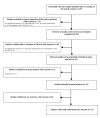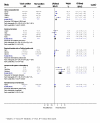Maximising response to postal questionnaires--a systematic review of randomised trials in health research
- PMID: 16504090
- PMCID: PMC1421421
- DOI: 10.1186/1471-2288-6-5
Maximising response to postal questionnaires--a systematic review of randomised trials in health research
Abstract
Background: Postal self-completion questionnaires offer one of the least expensive modes of collecting patient based outcomes in health care research. The purpose of this review is to assess the efficacy of methods of increasing response to postal questionnaires in health care studies on patient populations.
Methods: The following databases were searched: Medline, Embase, CENTRAL, CDSR, PsycINFO, NRR and ZETOC. Reference lists of relevant reviews and relevant journals were hand searched. Inclusion criteria were randomised trials of strategies to improve questionnaire response in health care research on patient populations. Response rate was defined as the percentage of questionnaires returned after all follow-up efforts. Study quality was assessed by two independent reviewers. The Mantel-Haenszel method was used to calculate the pooled odds ratios.
Results: Thirteen studies reporting fifteen trials were included. Implementation of reminder letters and telephone contact had the most significant effect on response rates (odds ratio 3.7, 95% confidence interval 2.30 to 5.97 p = or <0.00001). Shorter questionnaires also improved response rates to a lesser degree (odds ratio 1.4, 95% confidence interval 1.19 to 1.54). No evidence was found that incentives, re-ordering of questions or including an information brochure with the questionnaire confer any additional advantage.
Conclusion: Implementing repeat mailing strategies and/or telephone reminders may improve response to postal questionnaires in health care research. Making the questionnaire shorter may also improve response rates. There is a lack of evidence to suggest that incentives are useful. In the context of health care research all strategies to improve response to postal questionnaires require further evaluation.
Figures
References
-
- Yammarino FJ, Skinner SJ, Childers TL. Understanding Mail Survey Response Behaviour - A Meta-Analysis. Public Opinion Quarterly. 1991;55:613–639. doi: 10.1086/269284. - DOI
-
- Fox RJ, Crask MR, Kim J. Mail Survey Response Rate: A Meta-Analysis of Selected Techniques for Inducing Response. Public Opinion Quarterly. 1988;52:467–491. doi: 10.1086/269125. - DOI
-
- Harvey L. Factors Affecting Response Rates to Mailed Questionnaires: A Comprehensive Literature review. Journal of the Market Research Society. 1987;29:341–353.
-
- Kanuk L. Mail Surveys and Response Rates: A Literature Review. Journal of Marketing Research. 1975;12:440–453.
Publication types
MeSH terms
LinkOut - more resources
Full Text Sources
Molecular Biology Databases



